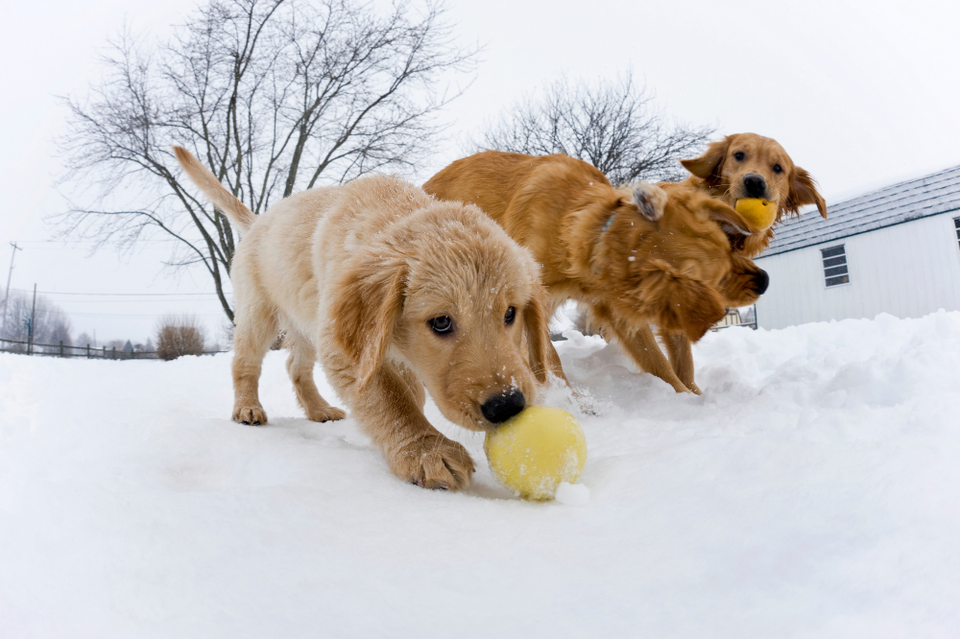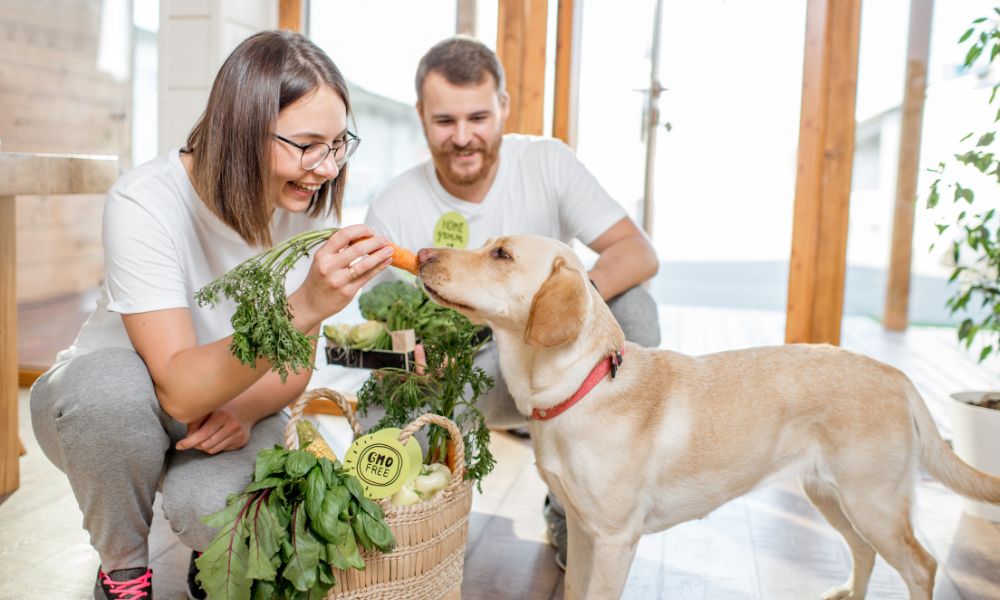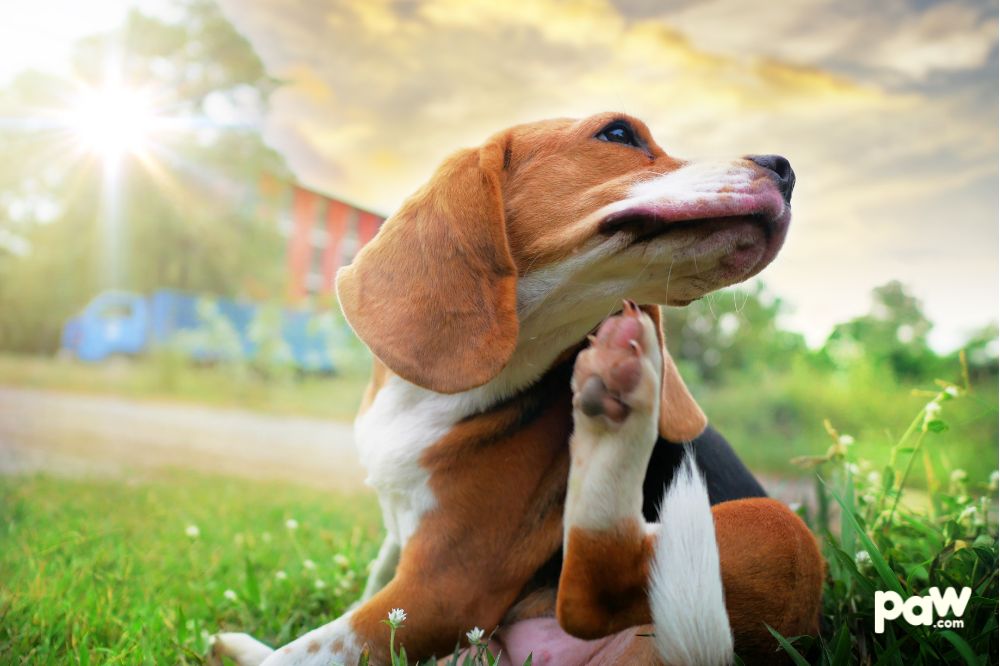
Winter Activities With Your Dog

First off, if you live in the Southern Hemisphere, welcome to (almost) summer — go read this article instead, then get back to this one in June. But if you’re in the Northern Hemisphere, then winter is coming and, depending on your latitude, the weather is going to be anywhere from basically moderate to walk-in freezer inside a walk-in freezer in an uninsulated warehouse in Minnesota.
For those of us lucky enough to live in areas where Christmas is still a feasible beach day (as long as you don’t want to go into the water), winter activities really aren’t that different than at other times of year. But for those of you who are fortunate enough to actually experience real seasons, this guide is for you.
And maybe people with real seasons might consider that unfortunate, but it’s all a matter of perspective. It’s really not much of a winter when you get five cold days, one giant and crazy storm, and then everyone is back in shorts before President’s Day.
On the other hand, I suppose it’s not much fun when you have to figure out on a regular basis which lump of snow on the side of the road is your car first thing every morning — if there are even distinct lumps at all, and if you didn’t have to exit your house by stepping onto the porch roof from the upstairs hallway window before hopping a foot down onto the snowbank that’s blocking the entire front of your house.
Hm. Suddenly, the beach this time of year doesn’t sound so bad.
First things always first
Weather information, no matter how you get, is always the most important thing to have. Choose your preferred method but have a portable back-up. Tune into weather stations on TV or radio (portable and in the car), have several good weather apps on your phone or devices, and bookmark weather sites on your computer.
It can also help to read up on weather patterns in your location as well as information on signs to look for to indicate changes or what’s coming, which differ wildly from area to area.
If you’re in a place subject to snow, hail, heavy rain, thunderstorms, or the like, then these are the primary things to be alert to before you undertake any outside activities with your dog. Try to time walks and outside time to those periods when you’re pretty sure that there will be breaks in the bad weather, then get inside otherwise.
Again, it depends on your location and the weather this year. Conditions may be fine for outdoor activities all the way until spring, or you all may have to stay in most of the time except for those quick bathroom breaks outside that your dog will appreciate and hate at the same time.
If you do want to leave home, you’ll have to decide whether it will just be for short forays to local shops and the like or if it’s time for a longer trek. In either case, tracking the likely weather and being prepared for it is your first step.
Always remember health and safety
Consider your dog’s health, too. How do they deal with cold? Some breeds, like huskies, thrive in it. Others, like Chihuahuas, are not big fans. If you’re going to go out into the snow, you’re going to need to accessorize.
This means doggie sweaters or coats, possible caps or snow hats, dog boots, and even tinted goggles. The latter may seem like overkill, but there’s one thing a lot of people forget about snow, especially if they go out on a sunny day: We need even more protection from the Sun on a day like that, not less.
Why? Because all the UV radiation from the Sun that doesn’t hit you directly is going to bounce off the snow and shine back up at you, particularly toward your eyes and the parts of your face, like chin and under your nose, that normally wouldn’t get it directly.
It’s the same reason you should always have UV protective eyewear if you’re out on a body of water during the summer. Dogs’ eyes are just like ours, and they can suffer Sun damage as well, including cataracts, clouded vision, or blindness.
This also means that you and your dog need sunscreen on exposed skin as well — this includes your dog’s nose. Never use human sunscreen on dogs, though, because many of the ingredients are dangerous to them.
Check with your vet on dog-safe sunscreens. You can get spray-on versions for their fur and a rub-on treatment, like lip balm, that will heal and protect their nose.
At the same time, don’t forget to consider the state of your health. How well do you deal with cold? Do you have any physical limitations or balance issues that might make a strenuous hike through a foot of snow a bad idea? Do you feel comfortable going out in current conditions?
While it’s nice to treat your dogs to snow fun when you know they can handle it, there’s no use injuring yourself to make it happen. That’s really not fair to them.
Now, you’ve looked at the weather and planned ahead, and all signs point to — worst Christmas storm ever and everything is probably going to be shut down after eight feet of snow and sixty-mile-per-hour winds.
So, it looks like it’s going to be indoor stuff only. Do your emergency prep, then lock in with dog and family.
Winter indoor activities
Do crafting with your dog
This is a great opportunity to bond indoors with your dog, but we’re not talking about teaching them how to scrapbook or crochet. Instead, you’re going to be making unique, DIY toys for your dog so they’ll have something to entertain themselves with while you’re all stuck inside.
These can be as simple as an appropriate-sized plastic bottle with the cap and ring removed and sewn up into an old sock. It will give your dog that satisfying crunchy sound and feeling without driving you nuts with the squeak.
Or you can get more elaborate and use old T-shirts or pajama pants to cut into 3-part strips (connected at one end) to plait into soft doggie rope toys without the risk of fibers getting stuck in their gums or being ingested.
Indoor dog agility course
If you have the room for it, you can always set up an indoor agility course to give your dog some exercise and much needed training in negotiating the obstacles. You can choose to make a DIY course or invest in professional equipment.
Note that you’ll have to scale back for indoor agility, and you probably don’t want any kind of see-saw ramps that can damage your floors or make loud thunks. Also make sure that the bottoms of the pieces are padded to protect your floors but also designed to be no-skid.
Don’t be afraid to get creative when making your indoor obstacles.
For an agility tunnel, throw a blanket over a long, low coffee table, for example, or use a broom and two chairs to create a limbo or jump bar for your dog. To create weave poles, you can use various methods, often depending on the size of your dog. For example, empty one- or two-liter water bottles can work if you add a little weight (water, gravel, or sand) and cap them so that they won’t get knocked over.
If you’re a little more handy, you can affix wooden dowels or broomsticks to a secure base, or even pull out the tools and make something more elaborate with PVC pipe and slotted metal flats.
The course doesn’t have to be fancy or even look particularly nice. Think of it as creating an elaborate pillow fort that you and your dog can enjoy together during the cold winter months.
Shopping spree in dog-friendly stores
Maybe, like you, your dog loves shopping and you both need to get out of the house. Check that weather report and head down to the nearest indoor, heated mall that has dog-friendly stores.
Every category is covered, so whether you want to grab the latest New York Times best-seller, a couple of new outfits, or some crafting supplies to make those DIY dog toys fancier, there’s a store for you.
The list goes on and on, and if you hit the right mall, you can find plenty for you and your dog, from cosmetics to lawn care, and for prices ranging from Ross Dress for Less to Tiffany & Co.
Some stores are pet-friendly at every location in the chain, while for others its based on the discretion of the store or regional manager, so always check ahead first to make sure that you’re both welcome.
Happy shopping!
Indoor dog park
Finally, this will also require a trip outside to another indoor location, but maybe you don’t have room in your place for an agility course or your dog really needs a good run-around to work off excess energy and avoid the zoomies.
This is why an indoor dog park can be such a good idea. You can find them all over the country, and they provide all of the space and fun of a regular dog park minus the weather and take-home mud and dirt.
Unlike many outdoor dog parks, the indoor versions have coffee and snack bars for the humans, so they’re the best of both worlds.
Winter outdoor activities

Play in the snow
This can be as easy as going into your own backyard if you have the space and weather for it. It can also be a lot of fun if your dog loves the snow.
In general, just don’t let them play for too long. Thirty minutes at a stretch is a good rule of paw. And if it’s particularly cold where you are or your snow is hard and icy instead of powdery, snow boots and warm dog clothes are a must.
Always watch for hypothermia, and bring your dog in and provide necessary attention at the first signs.
So, once you’re outside, what do you do? You can hide your dog’s favorite treats in the snow for them to sniff out and dig up. Just make sure that there are no rocks, sticks, or other dirt in the snow you’re burying them with.
If you have enough snow, you can also use it to create an agility course, making humps, ramps, and other obstacles and, if you have a lot of snow, you can even dig out a snow-maze for your dog to navigate.
Hey, you’re going to have to dig that snow out eventually, right? Just be sure not to make the walls of the maze too thin or too tall so that they don’t collapse easily and so you can spot your dog if they get hopelessly lost inside. And if you have a hill in your backyard, consider teaching your dog to slide down it.
Although it might not seem obvious, a lot of dogs just love doing this on their own, often on their sides or backs. You can also try to train them how to use a sled — just make sure to create a slight upward snow ramp at the far end of the yard to help them stop.
Go on a sleigh ride
Speaking of sledding, you could make it a family affair, with everyone going on a sleigh ride. Unfortunately, though, you’re out of luck in a lot of paces — dogs not allowed because they can spook the horses or, in the case of Elk viewing tours, their scents can disturb the animals.
However, if you want to go to South Lake Tahoe in California, there is one place, Borges Sleigh Rides and Carriage Rides, that is dog-friendly as long as the dogs are on leashes. Note that by the time this piece is published, that area is expected to have gotten a lot of snow. And yes, it snows in California; that’s how the Sierra Nevada got its name.
Snow hike
If you’re both active types, then consider skipping the sleigh and going on foot along a hiking trail while it’s covered in snow. Of course, you always have to take safety precautions, including the proper clothing and protective gear for all of you.
Note the word “all.” For this kind of activity, especially if you’re going to be going into territory farther from home, it’s always a good idea to bring at least one other human along, and let two or more people know when and where you’re going and when you’re coming back.
When you’re gearing up, also bring plenty of water and snacks. Remember — just because it’s cold doesn’t mean you’re not dehydrating. In fact, the cold may make it worse because the humidity is so low.
Finally, if you’re making it a day-trip or longer to go up into local mountains, keep checking the weather forecasts for a few days before your trip, keeping an eye out for changes. Always have a Plan B, and don’t be surprised if you get to your original choice only to find out that it’s a lot colder or windier than your weather app told you.
Skijoring
This one is probably only for very athletic and brave humans and strong dogs, and while it’s only caught on generally in the U.S. recently, skijoring actually dates back to 1850s Scandinavia.
Ironically, they created it after returning from various gold rushes in the Western United States before immigrants to the U.S. from there brought it back, especially to the Upper Mid-West.
While the sport originally consisted of being towed by horses that did all the work, it now basically involves riding on skis while being towed by your dog — sort of. Depending on the size or strength of your dog, you might need to provide some assistance with ski poles.
This means that you and your dog both have to be in fairly good shape and ready for a strenuous adventure in cross-country skiing. Or, rather, skijoring.
The weather outside is frightful

Just because there’s a blizzard outside or all the roads are closed, it doesn’t mean that you and your dog can’t have fun at home, and enjoy a nice, warm, pet-safe fire while you’re at it.
If the weather will let you get out of the house, it can offer all kinds of opportunities for playtime and exploration. Just be sure to know what the weather is going to be like, always have a Plan B, and take care of you and your dog’s warmth, health, and safety above all.
Then count the days until spring arrives with a whole new set of activities to enjoy together, indoors and out!
Share this article
written by


